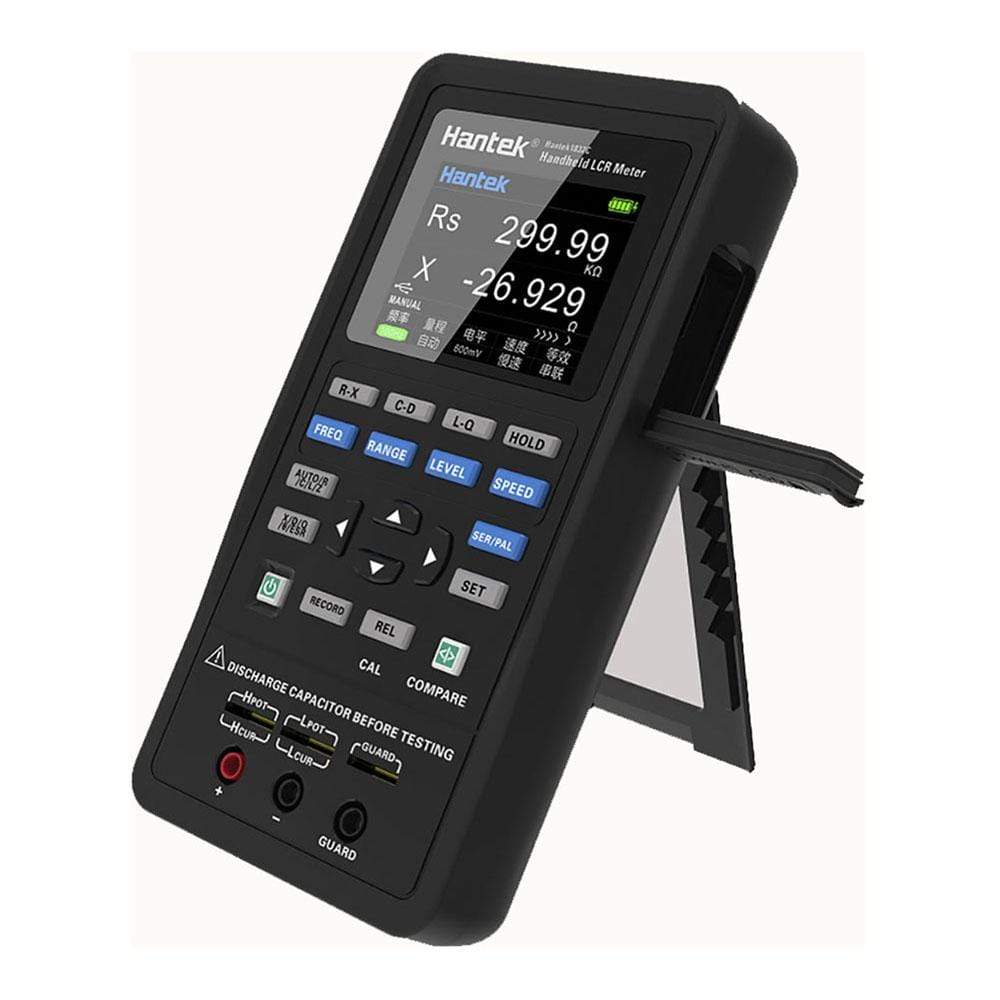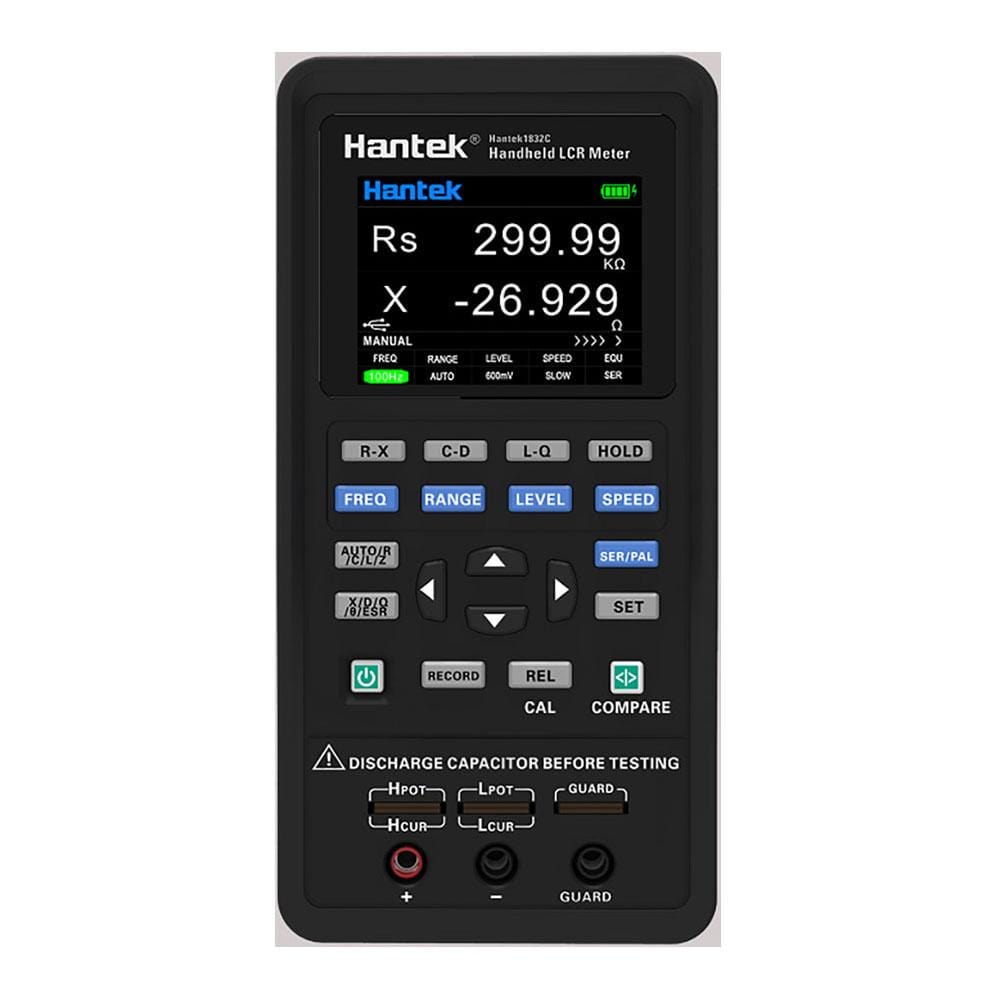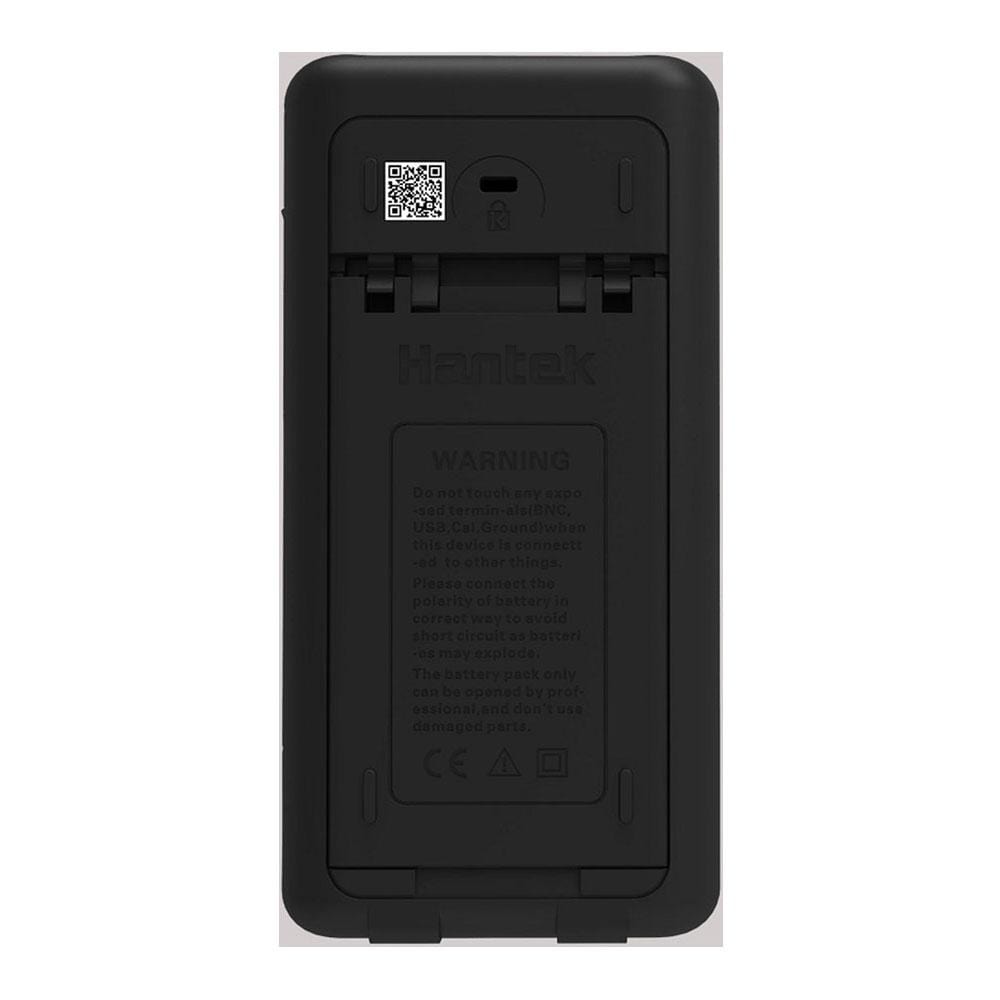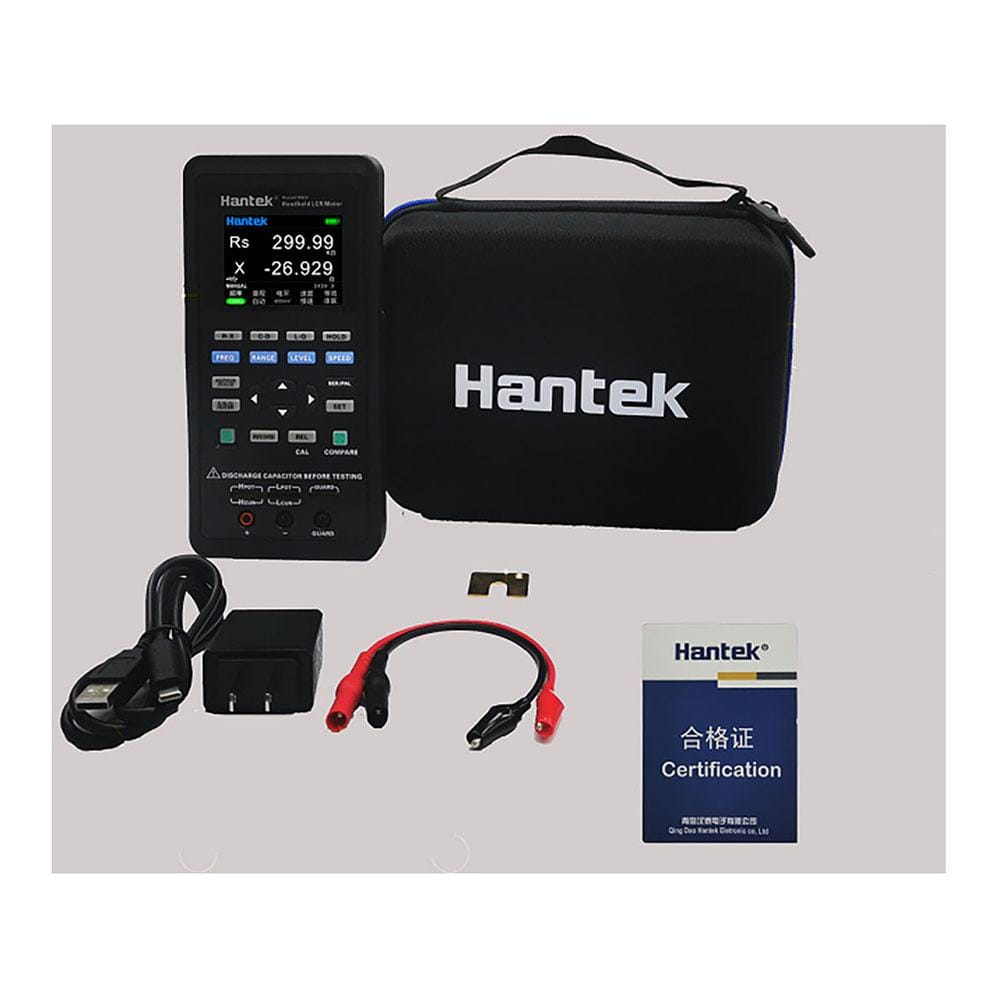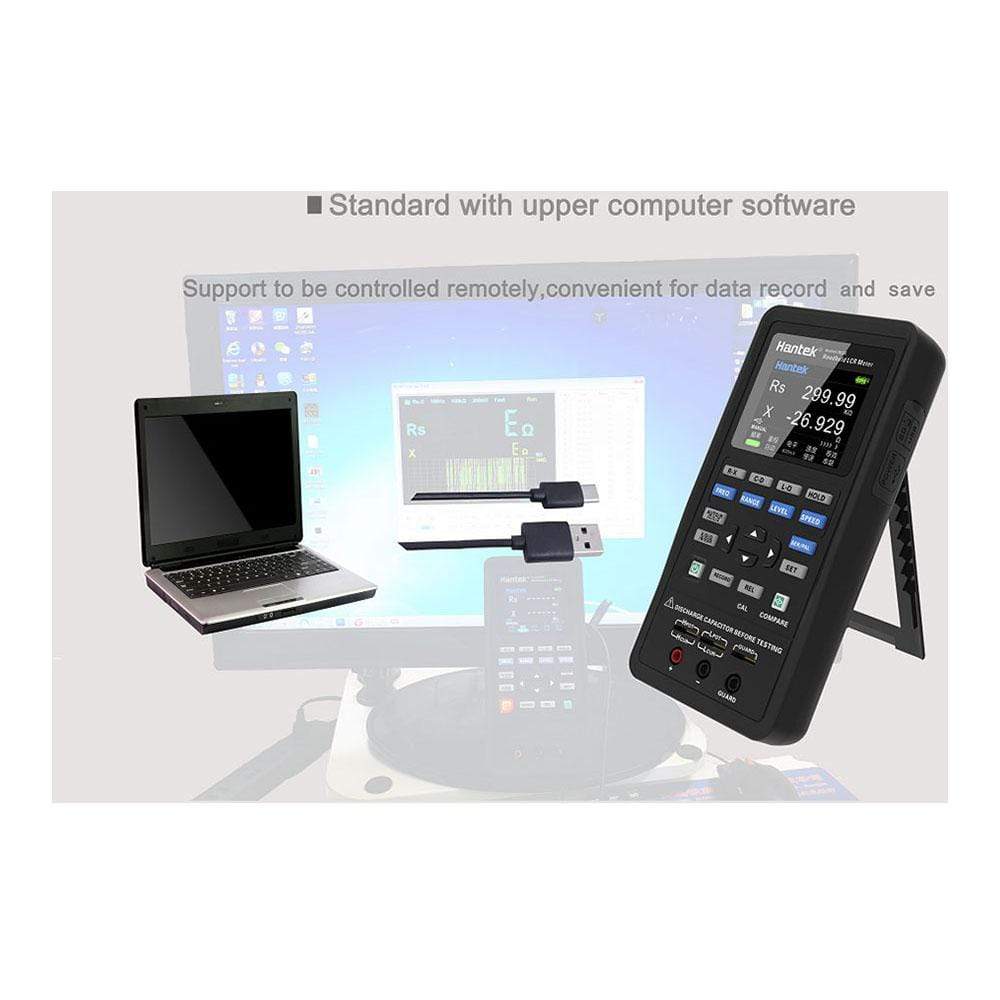
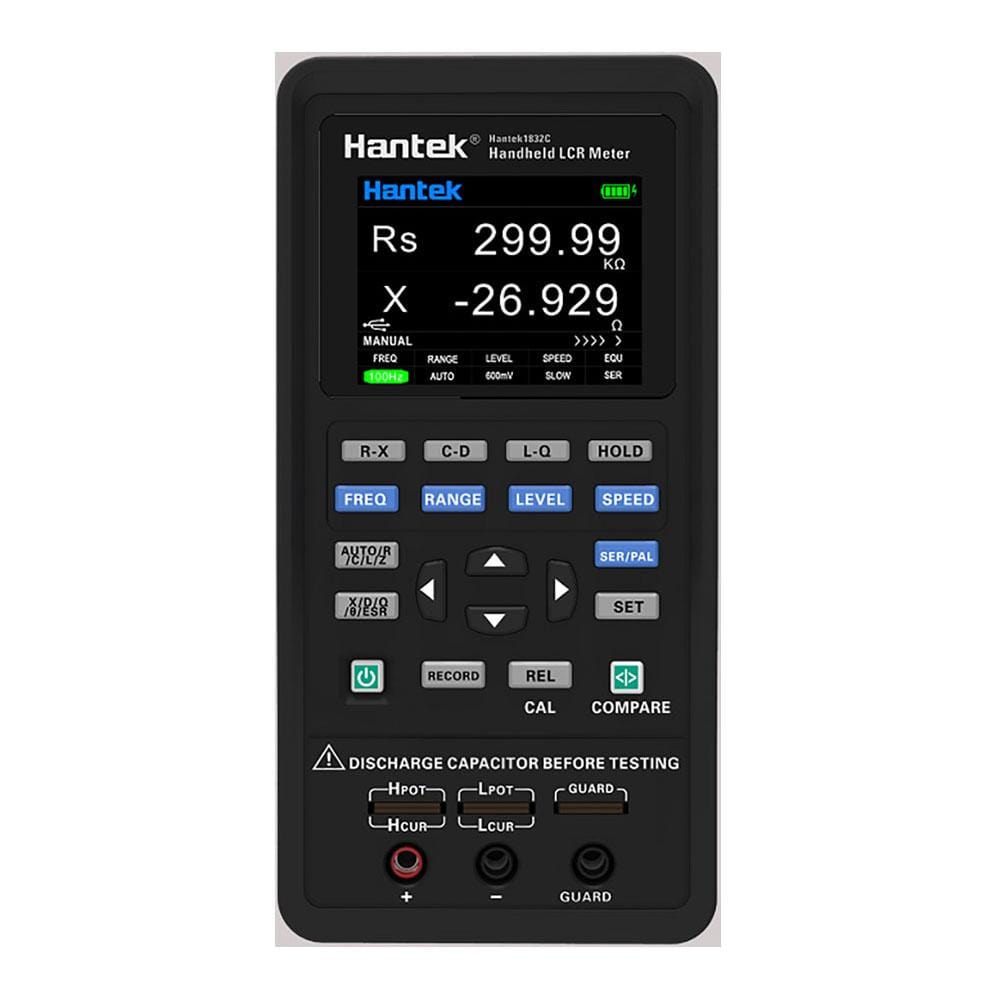
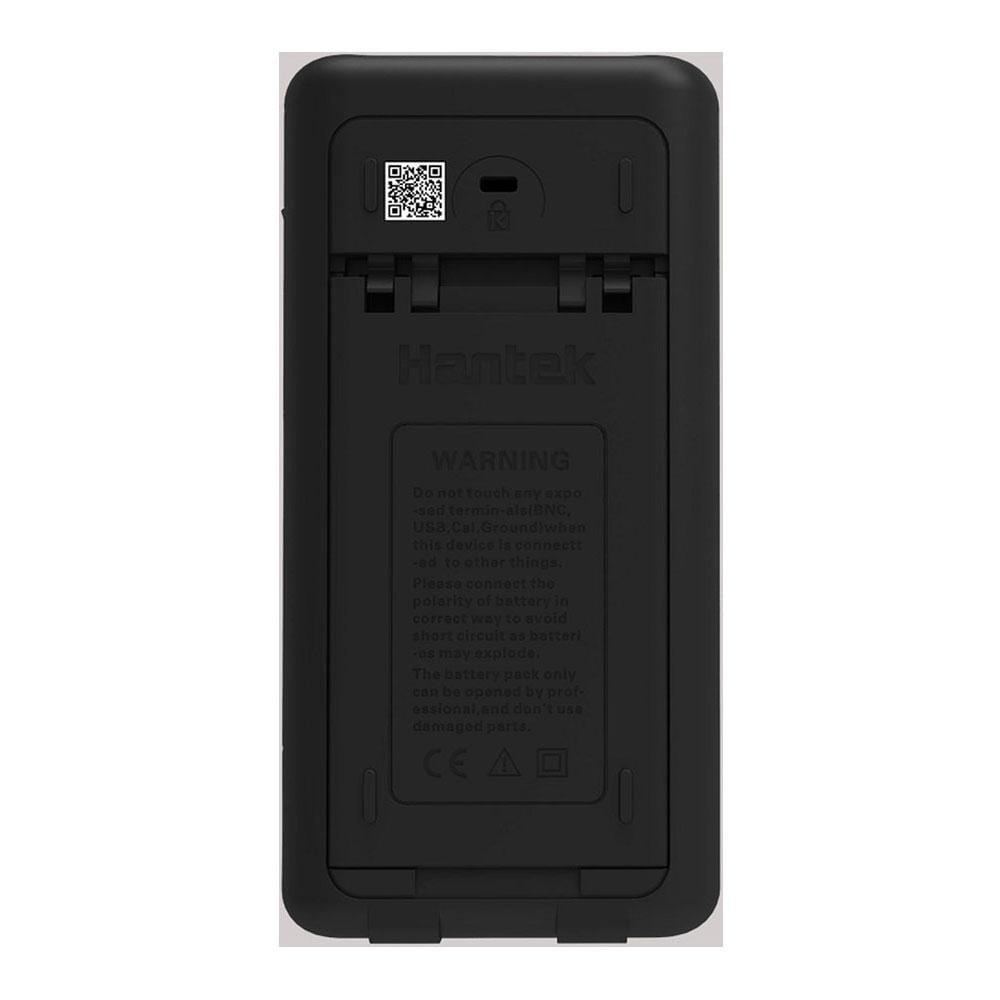
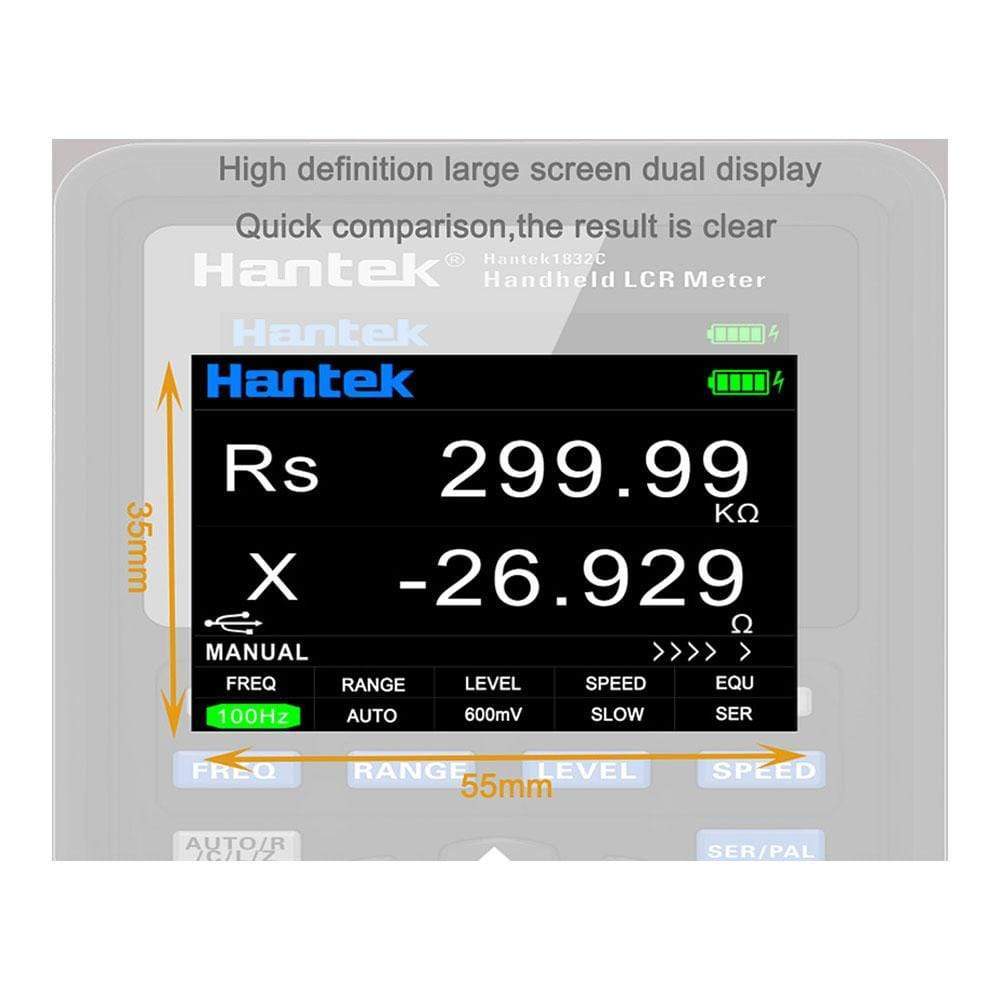
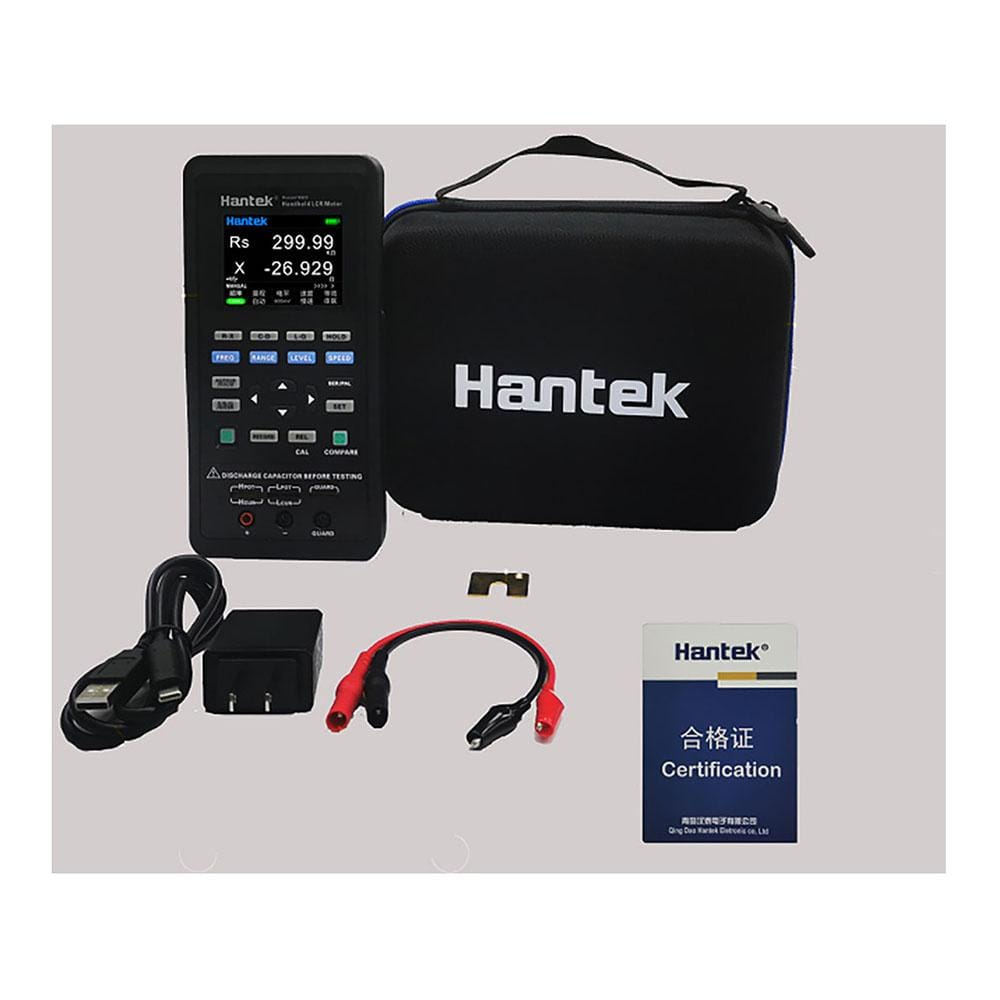
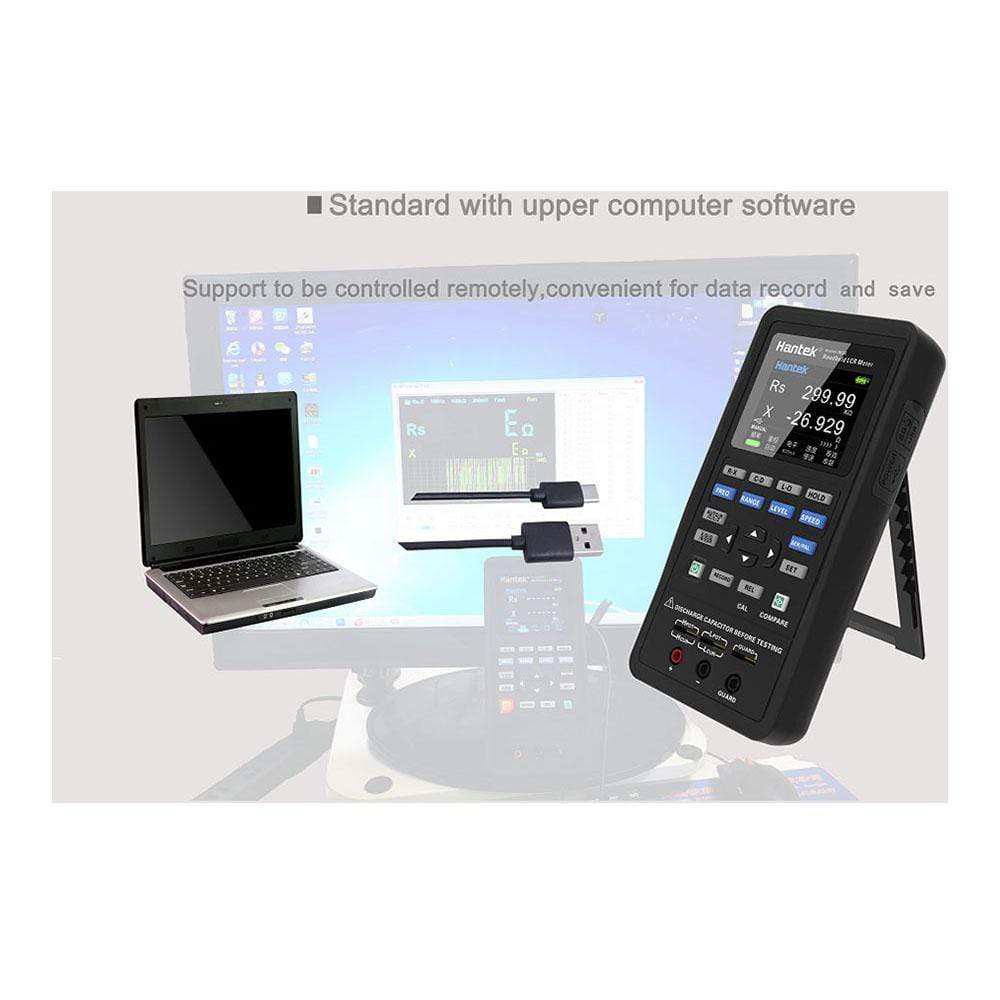
Key Features
Overview
The Hantek-1833C is a handheld LCR meter for characterising passive components across ten selectable test frequencies up to 100 kHz. A bright 2.8-inch TFT presents primary values (L/C/R/Z) together with secondary parameters (X, D, Q, θ, ESR) so you can see losses and reactance at a glance.
Engineers can choose 0.3 Vrms or 0.6 Vrms excitation, switch between series/parallel models, and run open/short calibration to maintain repeatability. For fixturing, the meter supports both 3-terminal and 5-terminal (with guard) connections to reduce leakage and stray capacitance on high-impedance parts. Measurement ranges span up to 2000 H, 20 mF and 20 MΩ with selectable speeds for binning or debug.
USB “upper-computer” software enables remote control and data logging for reports or incoming inspection. If you need lower maximum frequency, consider the related Hantek-1832C in the same series. For a broader view of impedance tools, see our Hantek LCR Meters collection.
If your workflow demands measurements at realistic operating frequencies with clear visibility of loss mechanisms, the 1833C provides the essentials in a compact, bench-friendly form factor.
Downloads
Why Engineers Choose The Hantek-1833C Compteur LCR portable jusqu'à 100 kHz
Measure At Application Frequencies
See Losses Instantly
Better Fixturing Options
Le Hantek-1833C est un appareil de mesure LCR portable professionnel. Conçu pour une utilisation en laboratoire, il est conçu pour mesurer avec précision les caractéristiques des composants et est fiable.
L'instrument mesure des valeurs de base telles que la résistance, la capacité, l'inductance et l'impédance à différentes fréquences de test. Il permet également de mesurer des caractéristiques liées à la fréquence telles que l'ESR et le Q.
L'instrument peut également enregistrer des valeurs au fil du temps, ce qui permet de mesurer la dérive des valeurs en fonction des changements de température extérieure, etc.
| General Information | |
|---|---|
Part Number (SKU) |
Hantek-1833C
|
Manufacturer |
|
| Physical and Mechanical | |
Weight |
1.0 kg
|
| Other | |
Warranty |
|
HS Code Customs Tariff code
|
|
EAN |
5055383617128
|
Frequently Asked Questions
Have a Question?
-
What calibration features are provided?
Open/short calibration routines are available to compensate fixtures and improve repeatability, especially for small SMD components.
-
How does it compare to more expensive handhelds?
Premium models (e.g., Keysight, B&K) add higher basic accuracy and ecosystems. The 1833C focuses on essential 100 kHz capability and guarded connections at a more accessible cost.
-
Can I log data to a PC?
Yes. USB “upper-computer” software enables remote control, limit testing and data logging for reports or incoming inspection.
-
What measurement ranges are available?
Up to 2000 H inductance, 20 mF capacitance and 20 MΩ resistance, covering most lab and production needs.
-
What test levels are available?
0.3 Vrms and 0.6 Vrms, helping you avoid over-biasing sensitive dielectrics or intentionally excite non-linear behaviour when required.
-
Is there a guard terminal and 5-terminal measurement?
Yes. The meter supports 3-terminal and 5-terminal with guard to reduce leakage and stray capacitance in high-impedance measurements.
-
Does it support series and parallel equivalent circuit modes?
Yes. You can select series or parallel to match the DUT and test frequency for representative results.
-
How does the 1833C differ from the 1832C?
Both are from the 183X series; the 1833C adds higher test-frequency coverage (up to 100 kHz). Choose the 1832C if you don’t require 100 kHz.
-
Which parameters does the 1833C display?
Primary L/C/R/Z plus secondary X, D (tan δ), Q, θ and ESR. Primary and secondary values can be shown together on the dual display.
-
What is the maximum test frequency on the Hantek-1833C?
100 kHz. It also offers ten selectable frequencies so you can align with common datasheet test points or explore frequency response efficiently.

